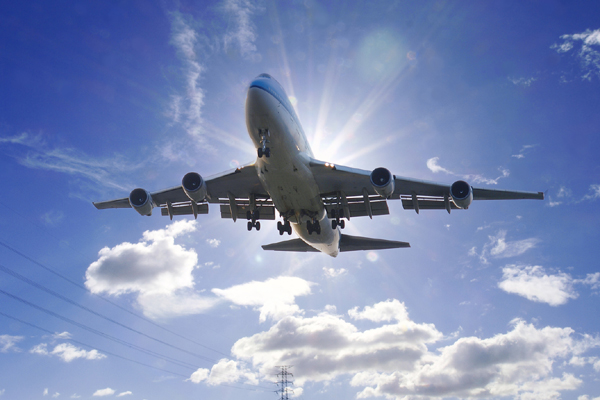
Global air freight demand grows 3.8pc in 2016
DUBAI, February 2, 2017
The global air freight market demand, measured in freight tonne kilometers (FTKs), grew by 3.8 per cent in 2016 compared to 2015, according to data released by the International Air Transport Association (Iata).
This was nearly double the industry’s average growth rate of 2.0 per cent over the last five years, said a statement from Iata.
Freight capacity, measured in available freight tonne kilometers (AFTKs), increased by 5.3 per cent in 2016, it said.
All regions, with the exception of Latin America, experienced positive freight growth in 2016. Carriers in Europe accounted for almost half of the total annual increase in demand, it added.
After a weak start to 2016, global freight volumes recovered in the second half of the year. A strong peak season, an increase in the shipment of silicon materials and a turnaround in new export orders contributed to the later uptick in demand. The early timing of the Lunar New Year (in January 2017) may also have helped push demand higher in December.
Alexandre de Juniac, director general and CEO, Iata, said: “In terms of demand, 2016 was a good year for air cargo. That was boosted by solid year-end performance. Looking ahead, strong export orders are good news.”
“But there are headwinds. The most significant is stagnant world trade which also faces the risk of protectionist measures. Governments must not forget that trade is a powerful tool for growth and prosperity,” he said.
“The air cargo industry must also improve its competitiveness. We know that the way forward is defined by digital processes which will drive efficiency and improve customer satisfaction. We must use the momentum of renewed demand growth to drive the important innovations of the e-cargo vision,” he added.
Freight volumes grew by 3.8 per cent in 2016 compared to 2015, outperforming forecasts. All regions, with the exception of Latin America, reported an increase in demand in 2016, said a statement.
Asia-Pacific carriers saw demand in freight volumes grow 9.8 per cent in December 2016 compared to the same period in 2015 and capacity grew by 5.7 per cent.
This contributed to a growth in freight demand of 2.1 per cent in 2016 compared to 2015. This was slightly below the 2.3 per cent increase seen the previous year. However, seasonally-adjusted volumes are now back to the levels reached in 2010 during the post-global financial crisis bounce-back.
The increase in demand is captured in the positive outlook from business surveys in the region. Capacity in the region increased 3.6 per cent in 2016.
North American airlines saw freight demand increase by 3.7 per cent in December 2016 year-on-year and capacity decrease 1.4 per cent. This contributed to modest annual growth in 2016 of 2.0 per cent, up from 1.3 per cent the previous year.
Capacity grew by 3.4 per cent in the 2016 calendar year. The strength of the US dollar continued to boost its inbound market but kept the export market under pressure.
European airlines posted a 16.4 per cent year-on-year increase in freight demand in December and a capacity rise of 5.9 per cent. The healthy results helped boost cargo volumes for the 2016 calendar year by 7.6 per cent - the largest increase of all regions, and accounting for almost half of the total global annual increase in freight demand.
The seasonally-adjusted growth trend is strong and corresponds with the sustained increase in export orders in Germany and the ongoing weakness in the Euro. Capacity in the region increased by 6.7 per cent in the 2016 calendar year.
Middle Eastern carriers’ freight volumes increased 11.2 per cent year-on-year in December and capacity increased 5.9 per cent. This contributed to an annual increase in demand of 6.9 per cent in 2016 – the second fastest growth rate of all the regions.
However this was the region’s slowest pace of growth since 2009 and well below the 12 per cent average annual rate seen over the past decade. The slowdown in growth is mainly due to weak freight volumes between the Middle East and Asia, and the Middle East and Europe.
Latin American airlines experienced a demand contraction of 1 per cent in December 2016, compared to the same period in 2015 and a decrease in capacity of 7.9 per cent. The drop in demand was reflected in the region’s 2016 overall performance - a 4.2 per cent decrease in freight volumes.
This was the second consecutive year that demand has fallen. Despite this, in seasonally-adjusted terms, growth levels are in-line with where they were at the start of 2016. The region continues to be blighted by weak economic and political conditions, particularly in the largest economy, Brazil. Capacity in the region decreased by 2.0 per cent in 2016 compared to 2015.
African carriers’ had the second fastest growth in year-on-year freight volumes, up 13.6 per cent in December 2016 and a capacity increase of 5.3 per cent. This contributed to an annual growth in freight demand of 3.1 per cent in 2016, down from 4.5 per cent in 2015.
However, capacity surged by 25.5 per cent in the 2016 calendar year on the back of long-haul expansion, particularly by Ethiopian Airlines, causing a fall in the freight load factor, it stated. – TradeArabia News Service







